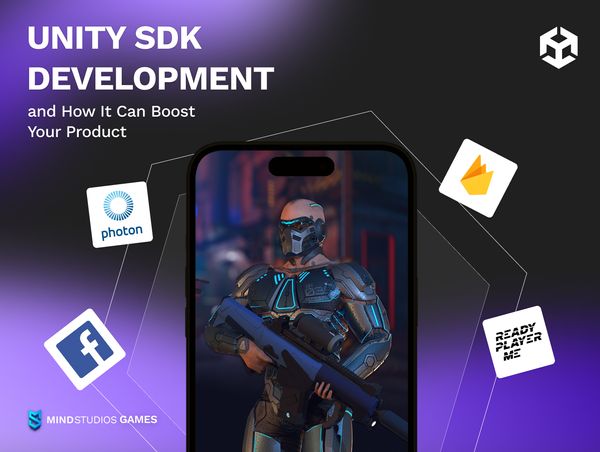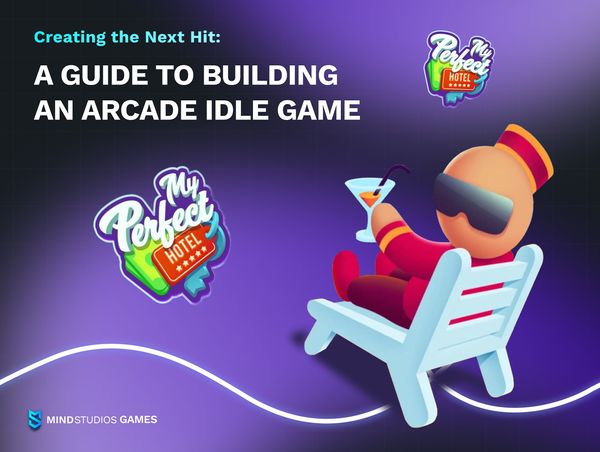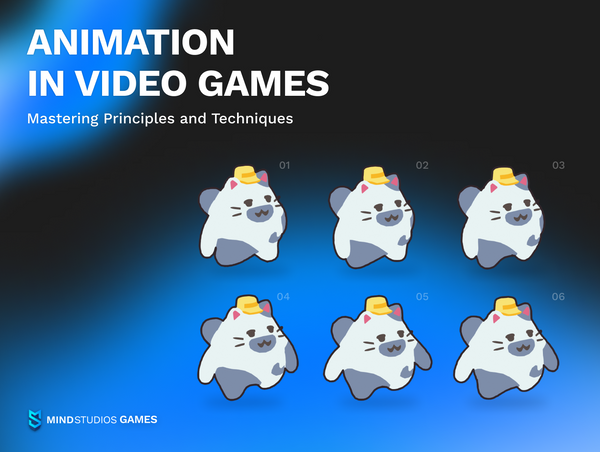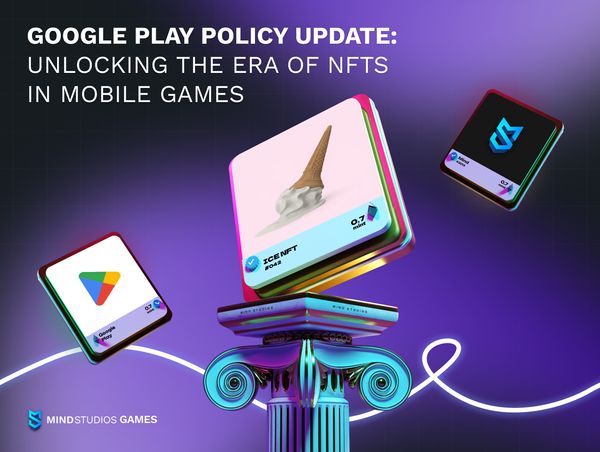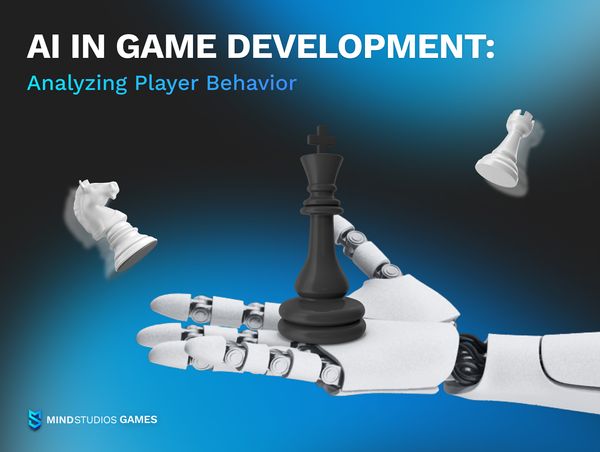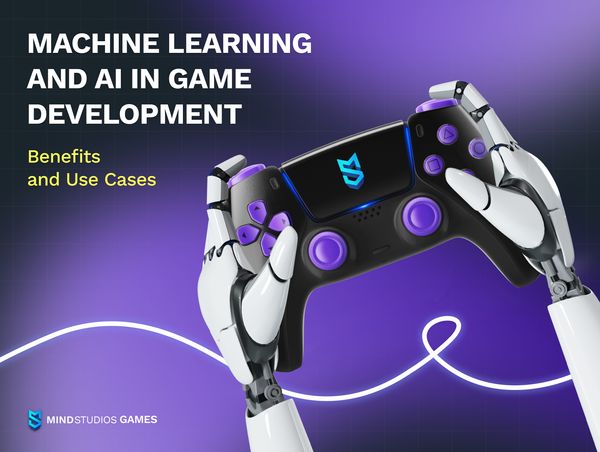
Let’s talk about AI in mobile game development!
The world is abuzz with AI. Some are claiming it will steal people’s jobs and remove creativity from everything, while others hail it as the invention that propels us forward.
In game development, AI and ML are also used already — to simplify and optimize processes and to diversify the experiences players get. As a company working in games, we at Mind Studios Games have been paying close attention to the topic. So shall we say our piece?
Understanding machine learning and AI in game development
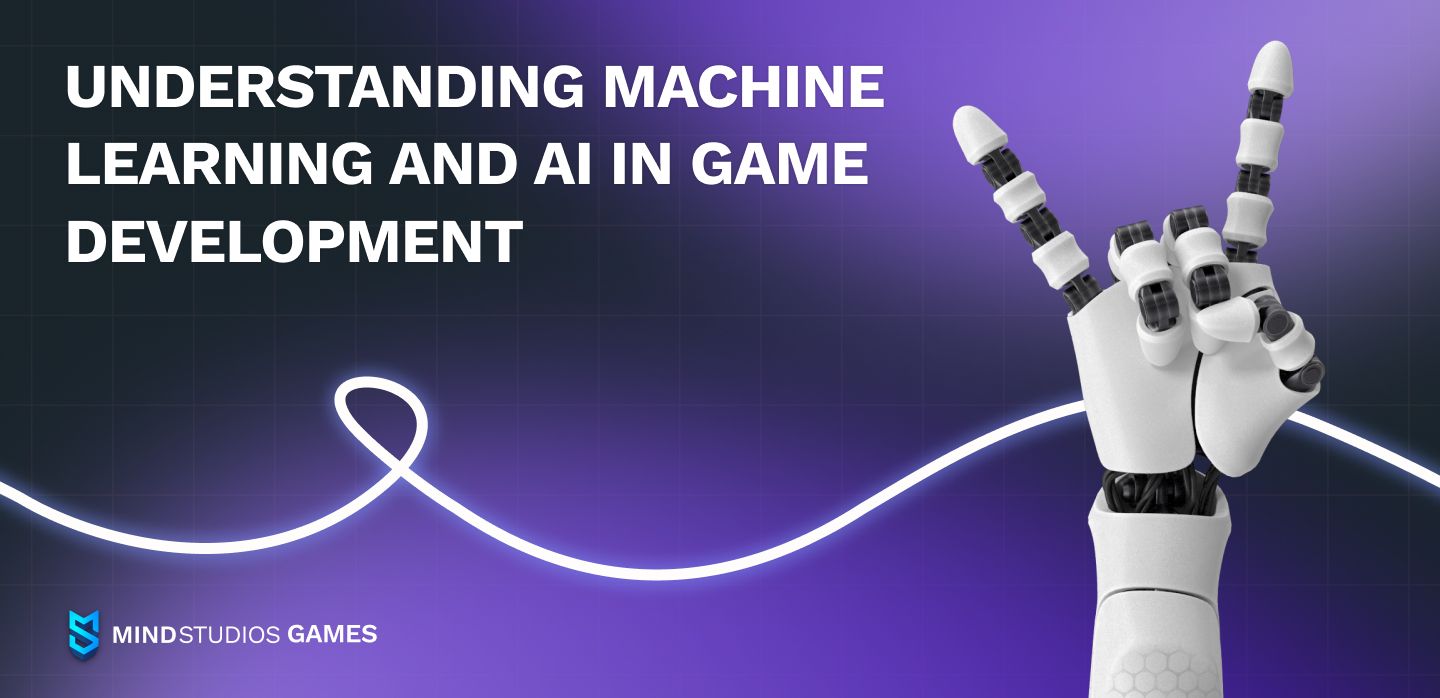
What can machine learning and AI in game development do for developers and players? Turns out, quite a lot. Different types of AI and ML algorithms can help developers:
- Create NPCs/adversaries that behave exceptionally human-like, adapt to changes, and offer players an experience that’s almost indistinguishable from real-life interactions;
- Build adjustable systems to change game settings based on the players’ style of play and performance, for higher user satisfaction;
- Make more diverse interactive content;
- Safeguard game accounts better;
- Improve learning processes in educational games;
- By employing natural language processing (NLP) in games, it becomes possible for game developers to create truly engaging in-game dialogs.
Of course, all this is possible with just humans working on games. However, it takes a lot of people, time, money, and other resources to create a truly all-encompassing lifelike experience for players. After all, a single game designer or writer can’t possibly think up all possible reactions a human can have to a certain phrase or action. Which makes it really hard for small game companies to get out there with something ground-breaking.
An AI algorithm trained on varied sources of human behavior data can, in a matter of seconds, come up with a multitude of options as a response to each problem. Then, a professional human game designer can look through the results and choose the options that will serve the game best. See, AI isn’t stealing the game designer’s job. At least, not yet 😛
Benefits of machine learning and AI in game development
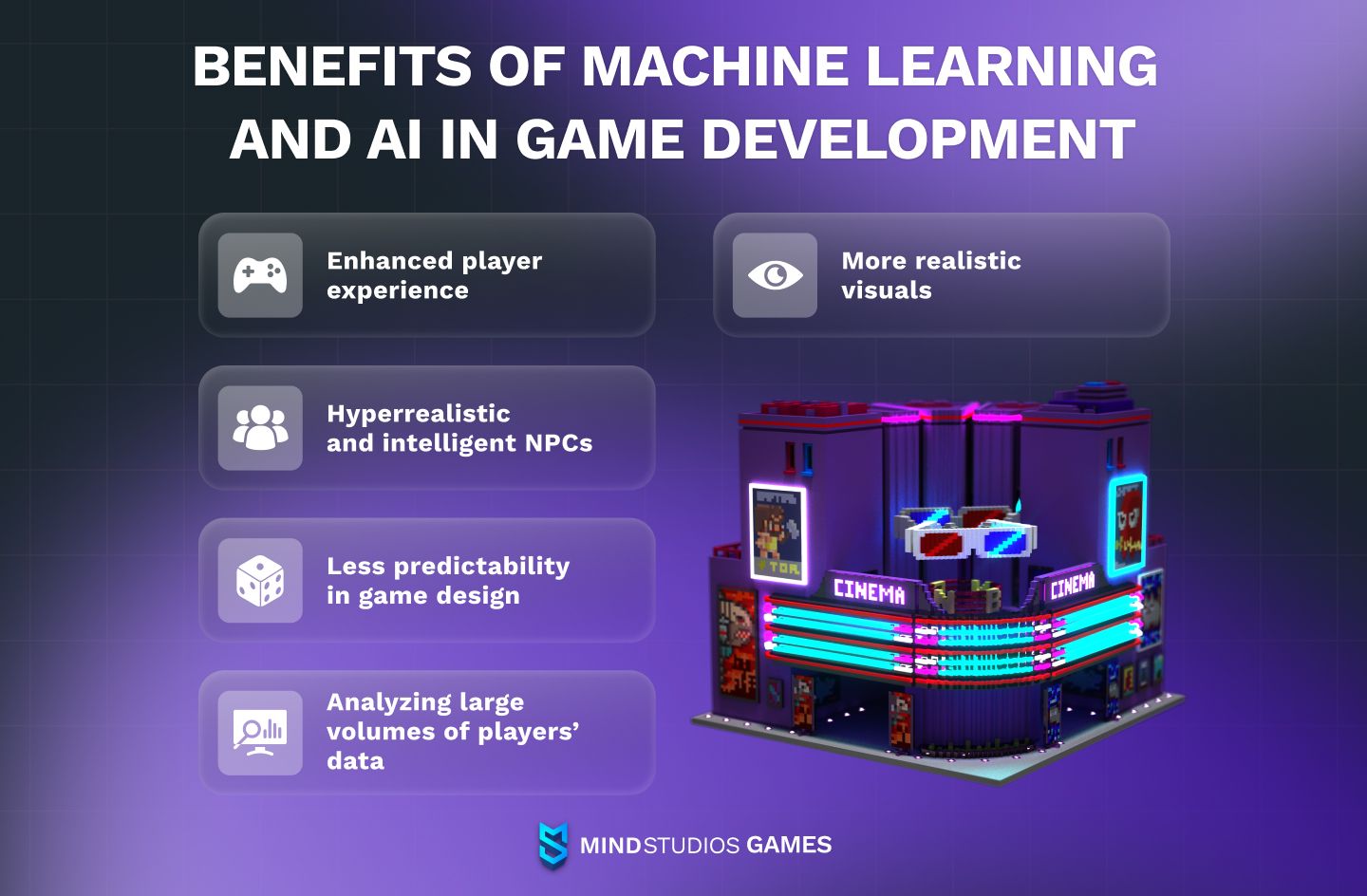
Jokes aside, the benefits of ML and AI in game development are indeed numerous. Although these technologies are still far from perfect and require extensive data for training as well as people able to manage the algorithm, they already lighten the developers’ workload. And this, in turn, allows specialists to focus more on tasks a computer can’t possibly complete.
Here are just some examples of how using machine learning and AI in game creation can benefit developers and players alike.
Enhanced player experience
Imagine you (as a game owner) knew at any given moment what each of your player’s modus operandi is. Their style of playing, actions they always take under certain circumstances, things like that.
For example, you know that a particular player always gives buff potions to their character before fighting a boss but not when going into dungeons. If a massive amount of players did that, the logical solution would be to place a potion seller NPC near bosses or to set a “limited time offer” pop-up when nearing a boss area. But if it’s not a massive amount of players but just some of them? No reason to do that. With the use of ML and AI, it’s possible to personalize such pop-ups and NPCs to appear only for the players who will most likely use them.
This will enhance player experience: the player won’t need to travel to an area with potion stores or crafting tables. And it will also increase chances of in-game purchases by players — be that in-game currency or real money.
Neat, isn’t it?
Hyperrealistic and intelligent NPCs
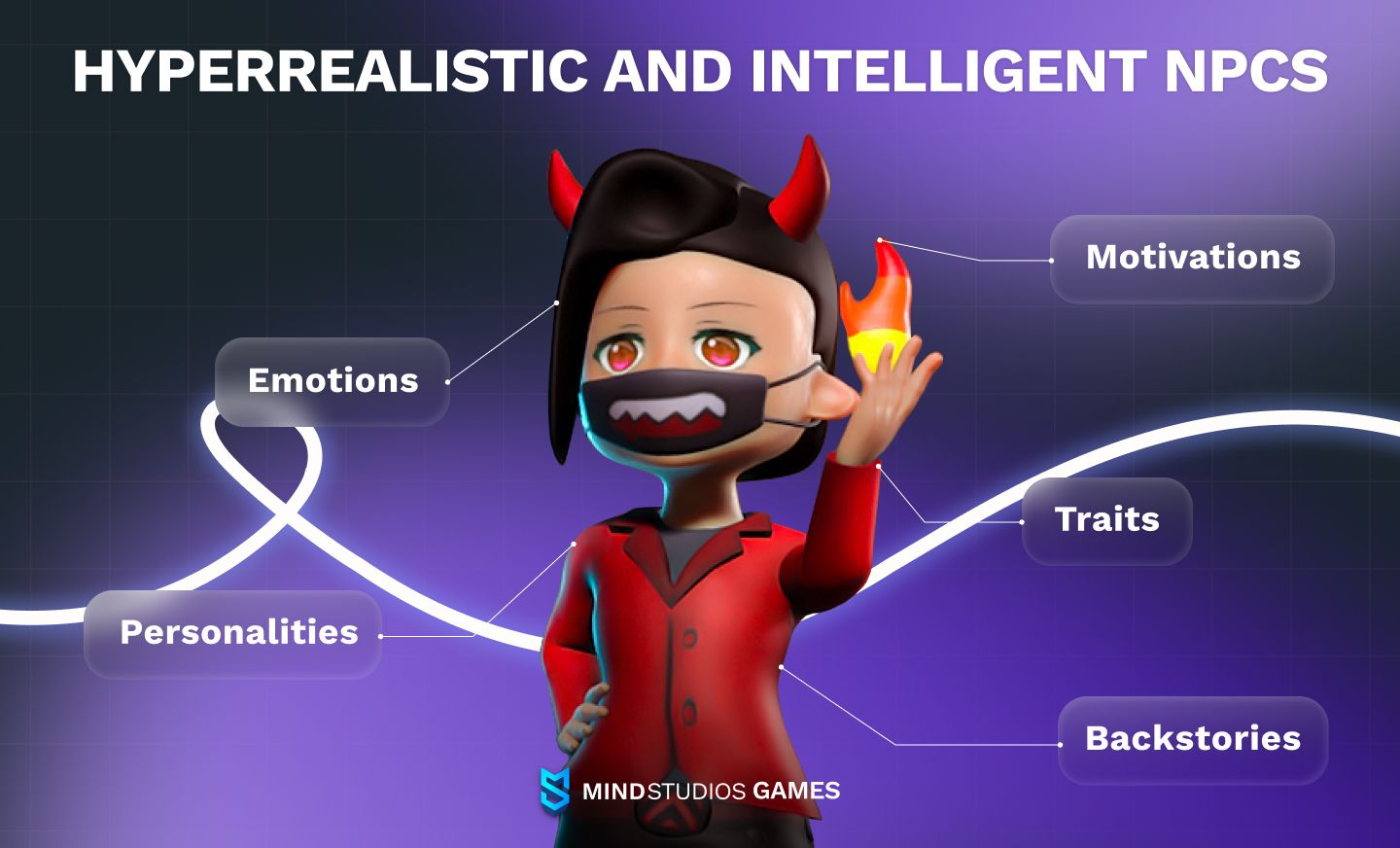
NPCs are usually the most boring of characters — they have a limited number of phrases they can say, and in most cases, the outcomes of any conversation are predictable right from the start. Especially if we’re talking about a non-essential NPC, interacting with which isn’t required for quest completion and brings only small rewards.
Writing extensive interactive dialogs for such characters is just not sensible, economically or time-wise.
With the help of NLP and AI in mobile game development, making even small-fry NPCs interesting isn’t a waste of resources anymore. In fact, it will be quick and easy. The most famous example of a service that could do that is, of course, ChatGPT, which is already used to build full text-based games.
These days, there are even games where AI-backed characters are your conversation partners, like in Replika: My AI Friend.
More realistic visuals
Video games are all about visuals, it’s one of the attention grabbers games have. And as mobile devices evolve, quality visuals become more important for mobile games as well. One of the use cases of machine learning and AI in game development involves upscaling — a technique of using data from high-quality images to model game graphics.
AI-backed upscaling makes it possible to easily render visuals to look more realistic: change colors under different lighting conditions or texture when an element of nature is applied (clothes getting wet or singed), add details when zoomed in, etc. One of the services that does that is Leonardo.AI.
And AI tools like Stable Diffusion can also help speed up the work of artists when they train the algorithm on their own work.
Less predictability in game design
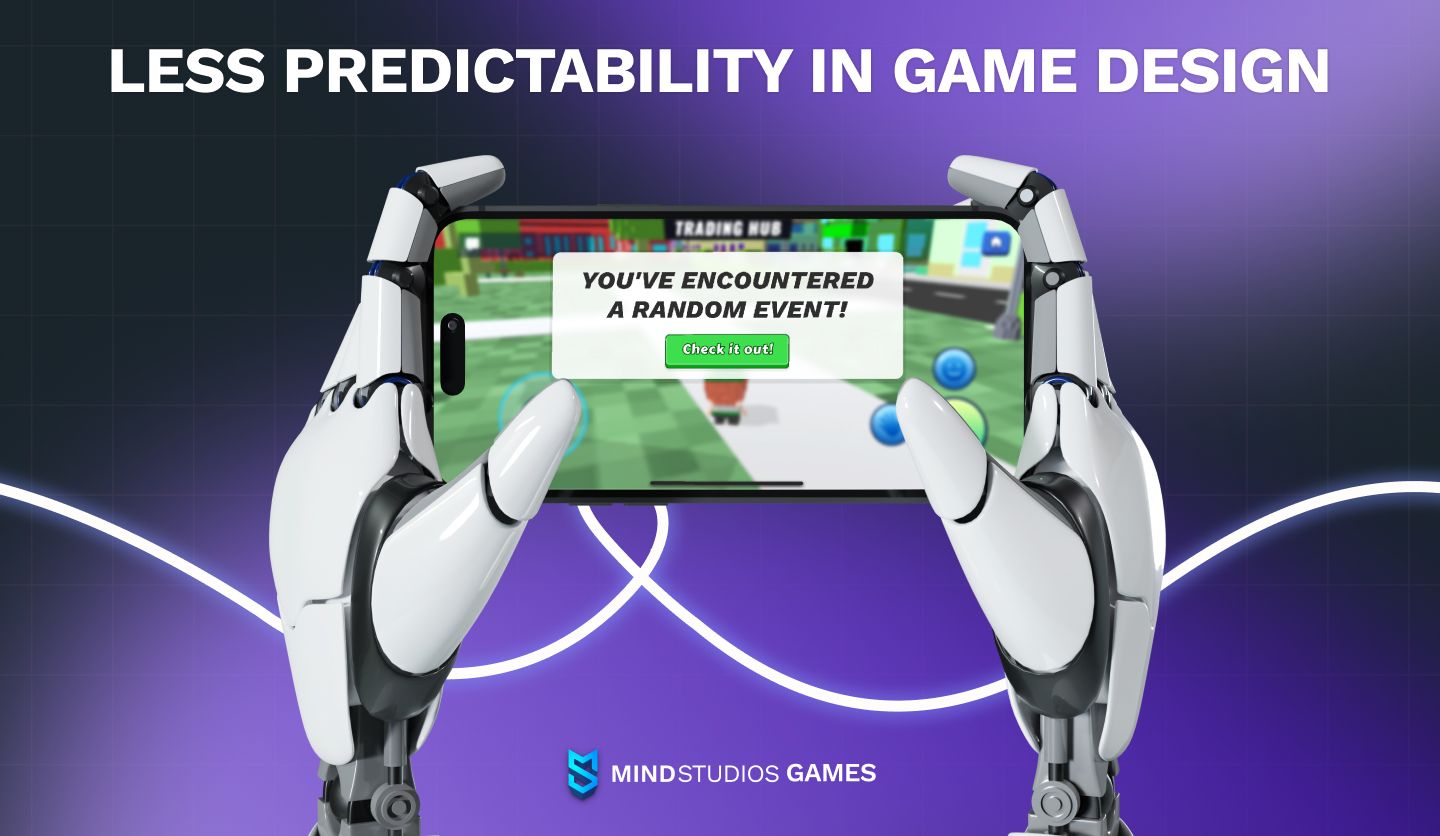
If your game doesn’t have a predetermined ending, you can use AI to introduce a bit of randomness into your game. Random events with rewards, unpredictable dialog outcomes, and more.
By surprising players, you’ll entertain them, making your game memorable and interesting. After all, if even the game’s developer doesn’t know what will happen to characters and when, the player won’t be able to guess as well. Some players enjoy such happenings quite a bit.
Analyzing large volumes of players’ data
One of the most widely used functions of AI across industries, not just in game development, is its ability to quickly analyze a lot of data. Now, any game requires analytics for success — to add or remove game elements, build game progression, improve monetization, and overall update your game wisely.
When it comes to analytics, AI can take your game to a new level (pun intended). With traditional analytics, you’ll need time and specialists to go over all the data. AI algorithms, when properly trained, can process huge chunks of data within seconds AND make assumptions or draw conclusions from that data. This speeds up the analysis processes and frees a lot of time for your employees.
Use cases of machine learning and AI in game development
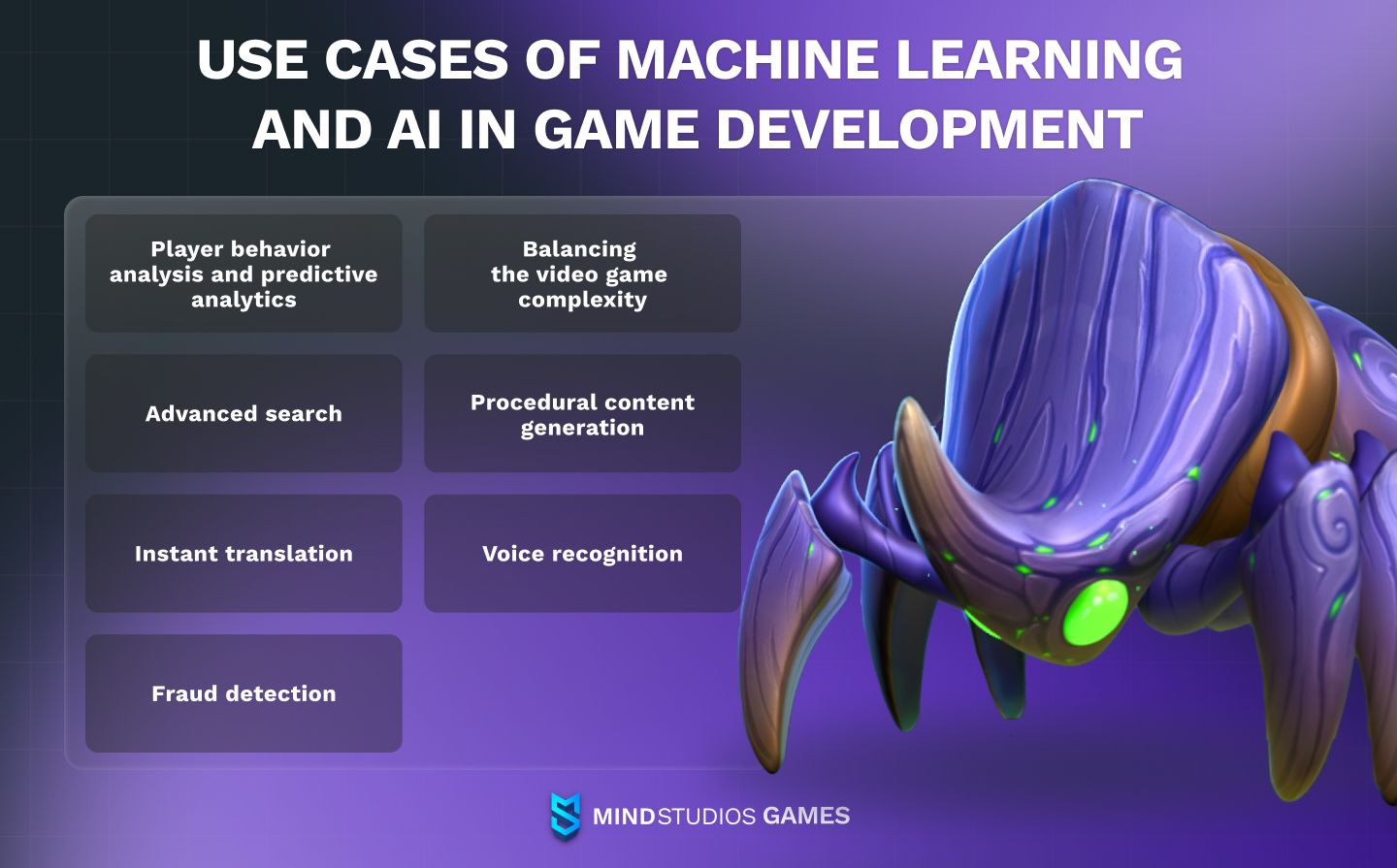
Now let’s talk a bit more about the practical application of ML and AI in game development. The existing use cases for now might be few due to the relative newness of the technology, but both AI and ML are already utilized in games.
Player behavior analysis and predictive analytics
We’ve mentioned in a previous section how analyzing your players’ in-game behavior can help boost in-game purchases, but there’s more to the use of AI and ML here.
With an opportunity to predict each player’s future steps in your game, you can create a truly unique, tailored experience for them. This not only includes purchases but also creating guides and recommendations — for example, how to faster upgrade characters specifically based on the user’s play style.
Another use case is recommending players other games — yours, your partners, or by endorsement from other companies — that will suit the particular player’s taste. This has the potential of not only earning you extra revenue (from endorsements) and/or users to your other games. It will also boost your reputation and make your brand memorable in players’ minds.
Fraud detection

Technically speaking, this is also one of the uses of predictive analytics. So far, if players stated their account has been stolen, game companies had limited capability of doing anything about it besides suspending it and resetting passwords.
For starters, nothing could be done unless and until a player filed a claim; by that time, the thief could have already done the damage: spent the player’s money from a connected credit card, destroyed valuable resources the player spent weeks grinding for, or damaged the player’s reputation in the game’s community.
Sometimes, the company might have to reimburse the player for anything lost, incurring losses itself.
By having full data on each player’s style and patterns, a machine learning algorithm has a chance of recognizing that something is wrong and suspending the account until the situation is resolved. This way, the possible damage is minimized.
Moreover, if the real owner of the account didn’t notice anything wrong (for example, they’re taking a break from the game for some reason), the algorithm can trigger a notification for them that their account might have been hacked.
There was a case in the Genshin Impact community some time after the game’s launch, before the company reinforced the security. Hackers logged into other peoples’ accounts and spent all the hard-won in-game currency on useless or less valuable purchases. Since Genshin is a gacha game, this caused players a lot of stress — and sometimes real money, if the currency was purchased and not earned in the game. Such situations can be avoided today with the use of ML and artificial intelligence in mobile game development.
Balancing the video game complexity
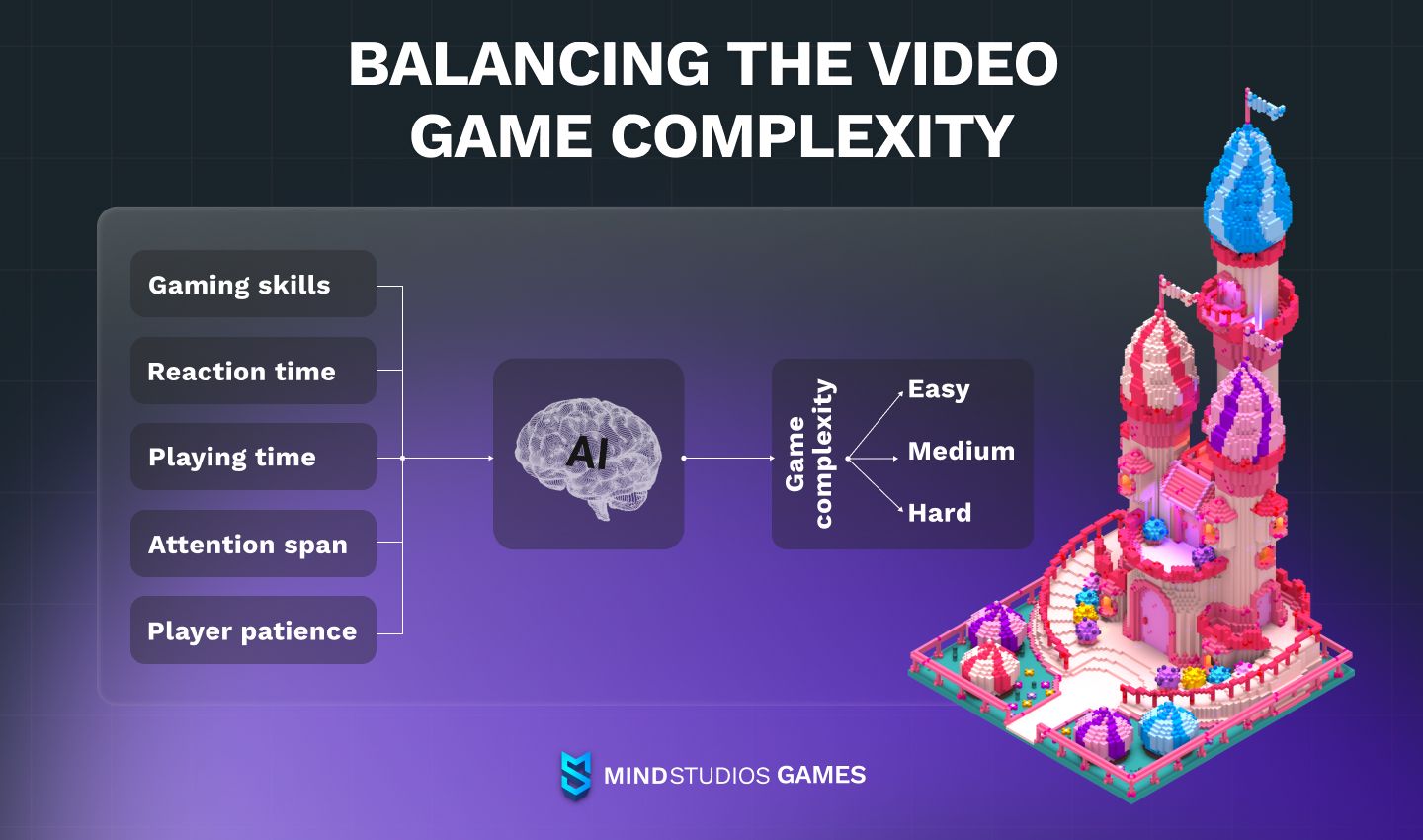
There’s nothing more frustrating for a player than the game that’s either too easy or too difficult. One of the reasons players abandon games is boredom and frustration when:
- You sail through levels so fast you feel like nothing can challenge you;
- Grinding for necessary items is so hard, it takes too long to get what you need.
Right now, most games have pre-programmed difficulty levels. Granted, game designers and developers spend a lot of time to balance things out to the optimal levels for most players. However, each individual player has their own:
- Gaming skills;
- Reaction time;
- Time available for playing;
- Attention span;
- Patience, and more individual traits.
This is another use for analytics and data processing. A machine learning algorithm can be set to adjust the game’s complexity to keep each player entertained in the long run. This means making the same level more challenging for some players and easier to handle for others, to satisfy everyone.
And satisfied players stay with the game longer, spend more on it, and spread word as free marketing.
Procedural content generation
Procedural content generation (PCG) is a term that covers a wide range of applications in computing. In video games, it is an algorithm that helps make players’ experience in the game unique, even if they go through the quest for not the first time.
For example, the loot mobs and bosses drop after players defeat them seems random, and to an extent, it is. But this randomness accounts for quest level/complexity, each participating player’s level, their contribution to the fight (if it’s a multiplayer game), and more factors.
Another use of PCG is generating random events and quests to engage players alongside or between major plot quest updates.
Procedural content generation algorithms are one of the use cases of AI and ML in game development that’s been around for a while, and they’re becoming more fine-tuned and refined each year. For example, LUDO is an AI platform that can help game creators come up with new concepts by using extensive market and trends research data.
Advanced search
Artificial intelligence, at its core, is a solution to what can be called a “search problem”.
When you ask ChatGPT to provide you with content — answer a question, write an email in a specific tone of voice, etc. — the algorithm searches its available networks for examples. Then it analyzes these examples and generates the answer to your inquiry based on this data. You could find these examples and generate the answer yourself, but it would take you longer.
These enhanced search capabilities of AI and ML algorithms are used in games. For example, IBM’s Deep Blue algorithm that defeated Garry Kasparov, the then-grandmaster of chess. That was 26 years ago, in 1997! Imagine what AI can do now.
Instant translation
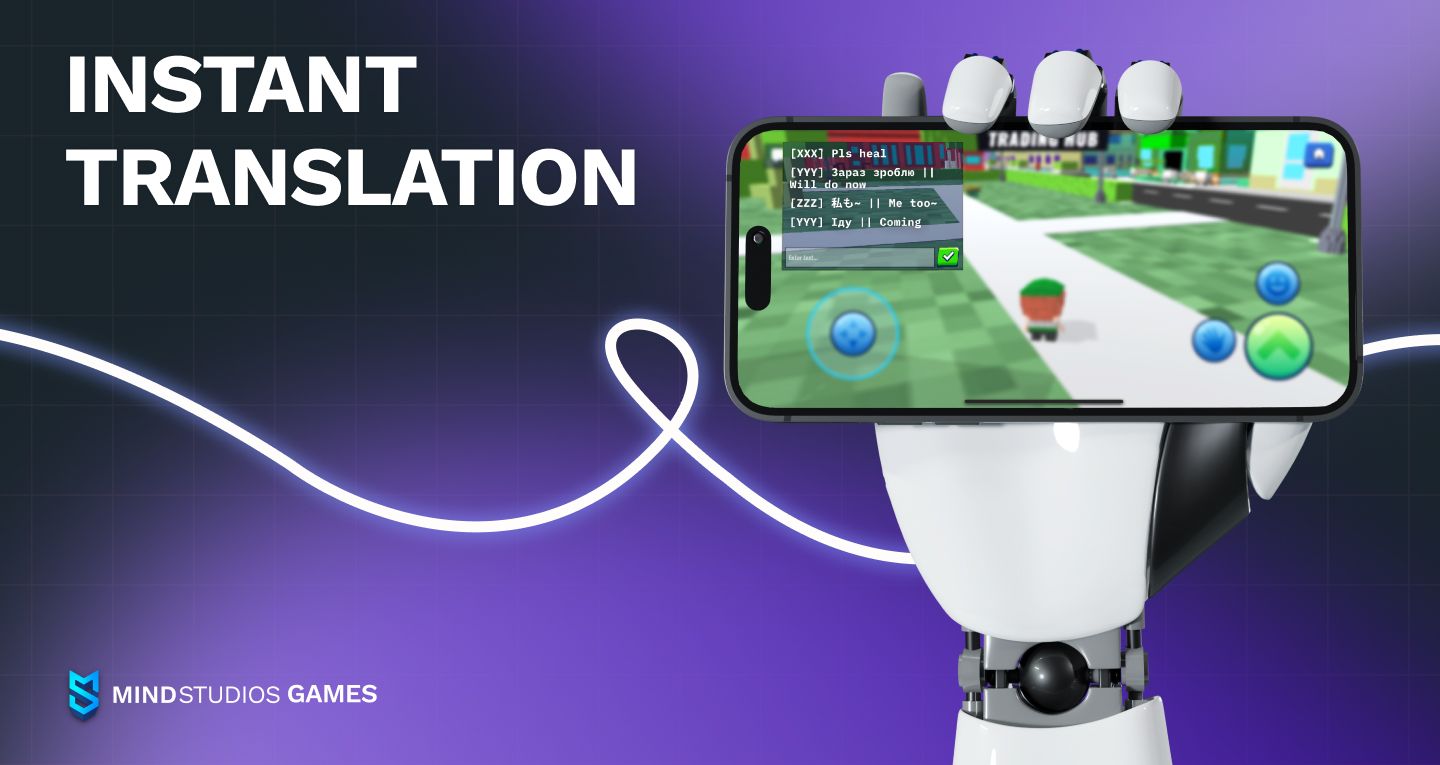
Most existing translation systems are based on machine learning and AI algorithms. You know how you can edit the translation Google Translate offered you and then save it? This is how the service learns new versions of translations.
It’s possible to use this type of ML and AI in game development. If your game is a multiplayer one and is launched globally, or on a territory with more than one frequently spoken language, having a translation algorithm will be a great perk for players.
Voice recognition
Voice recognition is a technology that helps many industries, from healthcare to banking. AI and ML-based voice recognition helps safeguard accounts (since a person’s voice is as unique as their fingertip), recognize when the caller is in distress or suffering a life-threatening health condition, and assists people with disabilities navigate the technology-packed world.
In games, the implementation of voice recognition can serve all of these and more functions.
Today, we already know of a number of games that use voice command recognition. Admittedly, the feature is especially popular in horror and battle/war simulation games, but the application isn’t limited to them.
Alternatively, voice recognition may be used for speech-to-text functionality, for example, to make playing in co-op easier for players. After all, when you’re busy shooting at the swarming mobs, it’s kind of hard to type at your teammates in all caps to get their act together and provide proper assistance 😁
Mind Studios Games as your mobile game development partner
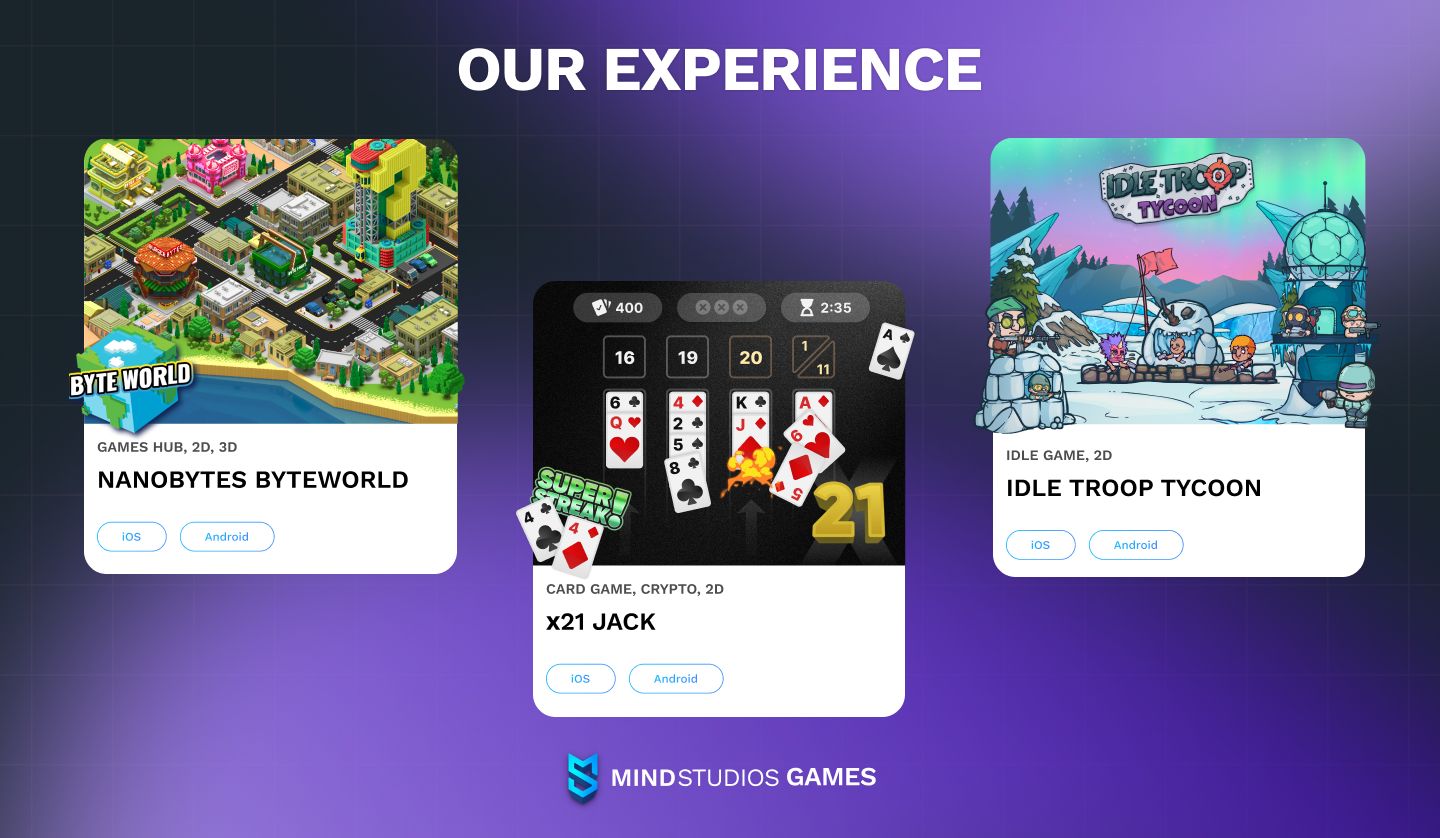
We at Mind Studios Games are always trying to stay abreast of all the technology innovation in the game development industry. Being a bunch of passionate gamers ourselves, we also try out games that use these new technologies, and AI in mobile game development is something that has our attention.
We also have some experience in implementing AI in our own games — one of our titles, Beetle Riders, has rivals for battles implemented via AI.
On our side, we’re excited to work more with AI and ML in game development, so if you need seasoned mobile game developers who keep up with the times, to outsource your game development to, don’t hesitate to drop us a line.
Conclusion
Whether artificial intelligence will take over the world completely or not still remains to be seen. The dystopian sci-fi books and games where robots rule the world don’t seem to be too close to reality so far. At this stage, AI and ML are great tools that can assist people, make our lives better, and simplify our work to free up time for families and friends.
Today, using machine learning and AI in game creation is what makes games more interesting, personalized, and diverse. It helps up build games that are more beautiful, more realistic, more vibrant.
Are you interested in a more in-depth look into the use of ML and AI in game development? Or do you have a game in mind and wish to know how these latest technologies can help you make it better? Mind Studios Games has specialists who are ready to answer your questions during a free consultation. And who knows, maybe we’re the team you were looking for all along 😎

